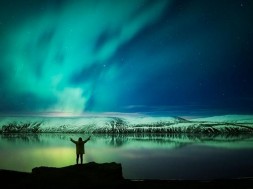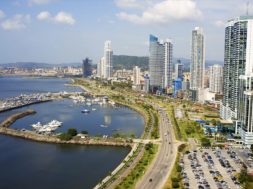Many people dream of a holiday to experience a sighting of the famous natural phenomenon, the Northern Lights. Iceland offers an ideal place to visit for this purpose: it has a milder climate than continental destinations, an excellent chance of seeing the aurora borealis and a wide range of additional activities to make for a well-rounded holiday. Travelling with an established tour operator will, naturally, take a lot of the stress out of arrangements, but before setting off it is useful to consider the important matter of clothing, the Icelandic Met Office’s Aurora Forecast, the “Full Moon Effect”, and, of course, what else there is to do besides seeing the lights.
Clothing
The Gulf Stream in the Atlantic Ocean ensures the country’s weather is markedly milder than in continental countries such as Sweden, where temperatures can regularly reach as low as -30C. Here, the temperatures do not fall nearly as low and snowfall is not typically thick at sea level, resulting in a more comfortable experience when chasing the Northern Lights. Iceland’s weather is, however, known for being changeable, so it is strongly recommended to wear layered clothes for convenience.
Aurora Forecast
In order to predict the best chance of seeing the Northern Lights, Iceland’s Met Office offers an Aurora Forecast, combining information about predicted aurora activity, cloud coverage, the moon cycle and moon rise times, and sunset and sunrise times. Visitors travelling with experienced tour operators will not need to worry about checking the forecast, as their operators will do this on their behalf in order to keep groups updated – but it is interesting information nonetheless. Independent travellers and science buffs will find it invaluable.
“Full Moon Effect”
There has been a lot of discussion of the “full moon effect”: specifically whether the light of the full moon obscures the light of the Northern Lights. Assertions that the moon out-shines the aurora borealis are untrue. Though the increased light in the sky reduces the contrast between the sky and the lights, it certainly does not prevent sightings. High solar activity, low cloud cover and the lack of artificial light are all considerably more important aspects. Tour operators will ensure that groups are taken far from artificial lights on suitable nights for optimal viewing. In actual fact, some photographers claim to have taken their most spectacular shots of the aurora during a full moon.
Other Sights
Beyond seeing the Northern Lights, Iceland has a plenty more to offer as well. From a taste of puffin in one of Reykjavik’s fine restaurants to a jeep tour over the country’s rugged landscape, or a visit to the Blue Lagoon complete with spa treatment on the way to the airport, visitors will not be disappointed with this fascinating island.





